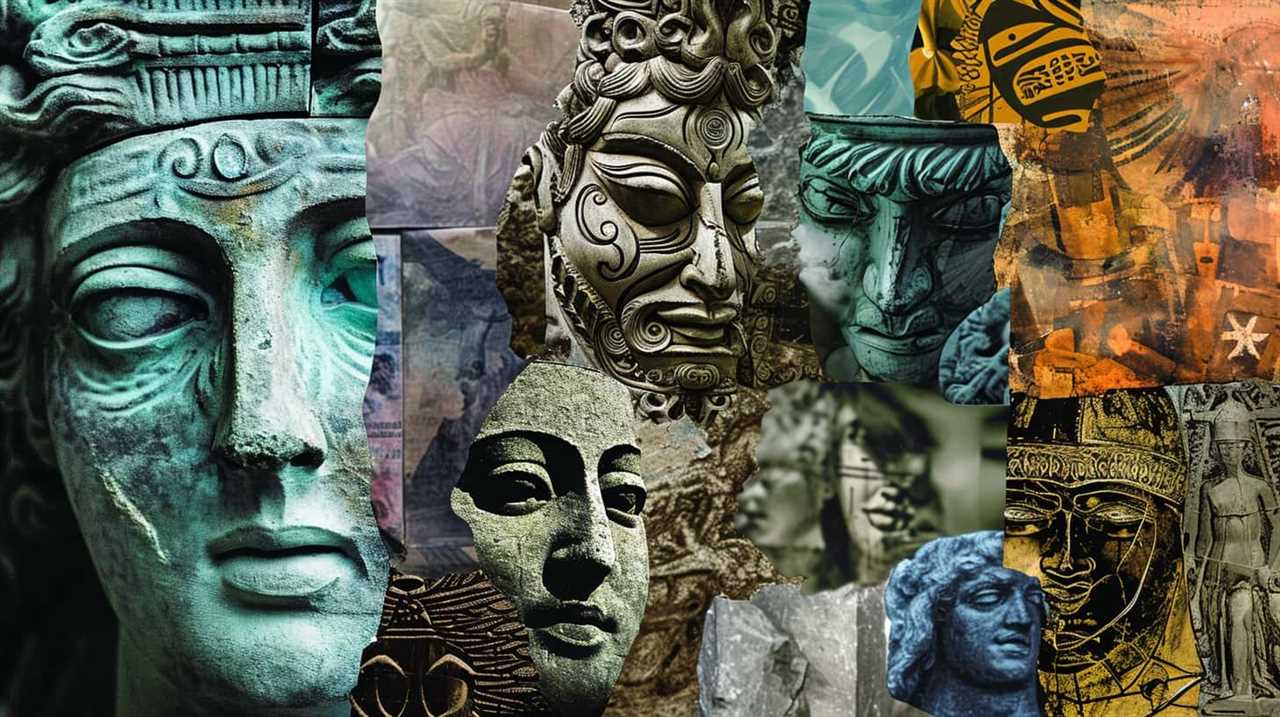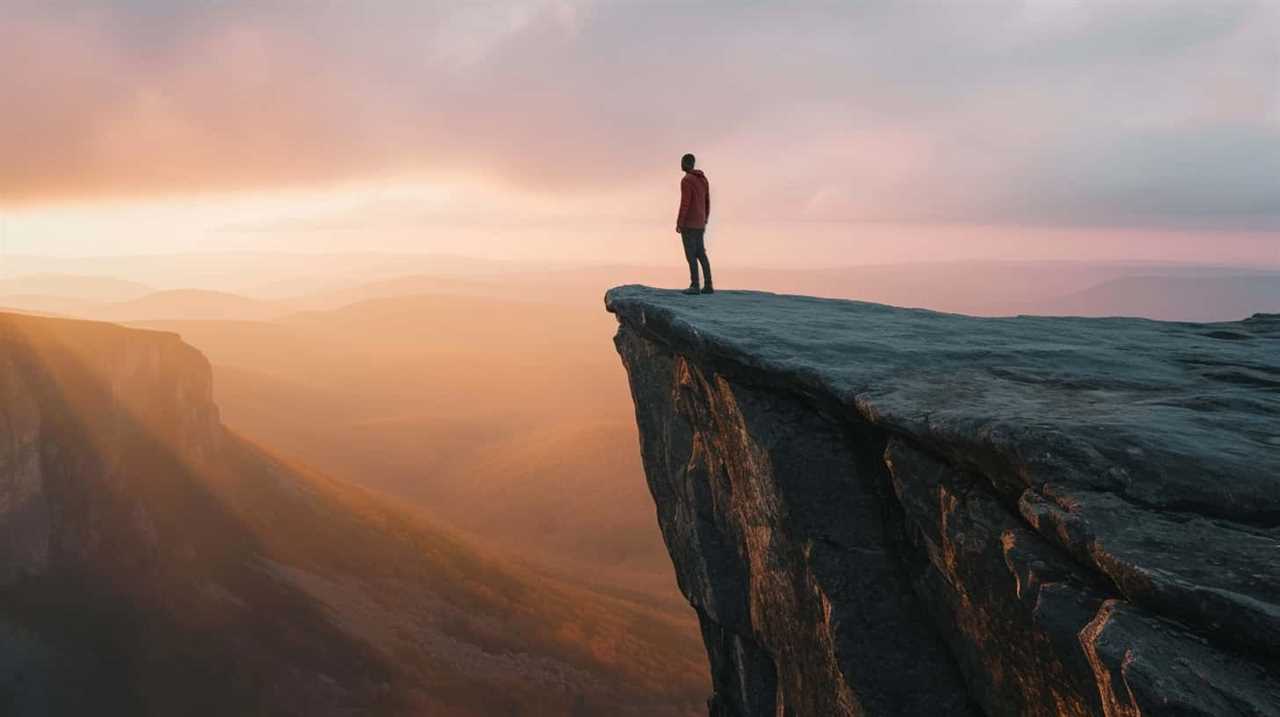In this compilation of motivational quotes about the purpose of creativity, we delve into the insightful words of renowned artists who have made a significant impact on the art world.
We delve into the words of Pablo Picasso and Vincent Van Gogh, who understood the transformative power of art in capturing raw emotions and expressing the human experience.
Frida Kahlo’s perspective on art as a form of healing resonates deeply, while Leonardo Da Vinci’s exploration of the interconnectedness between art and science ignites our curiosity.
Georgia O’Keeffe’s ability to find beauty in the ordinary challenges us to see the world through fresh eyes. Andy Warhol’s reflection on pop art and mass culture pushes the boundaries of artistic expression, while Gustav Klimt’s symbolism in art invites us to uncover hidden depths.
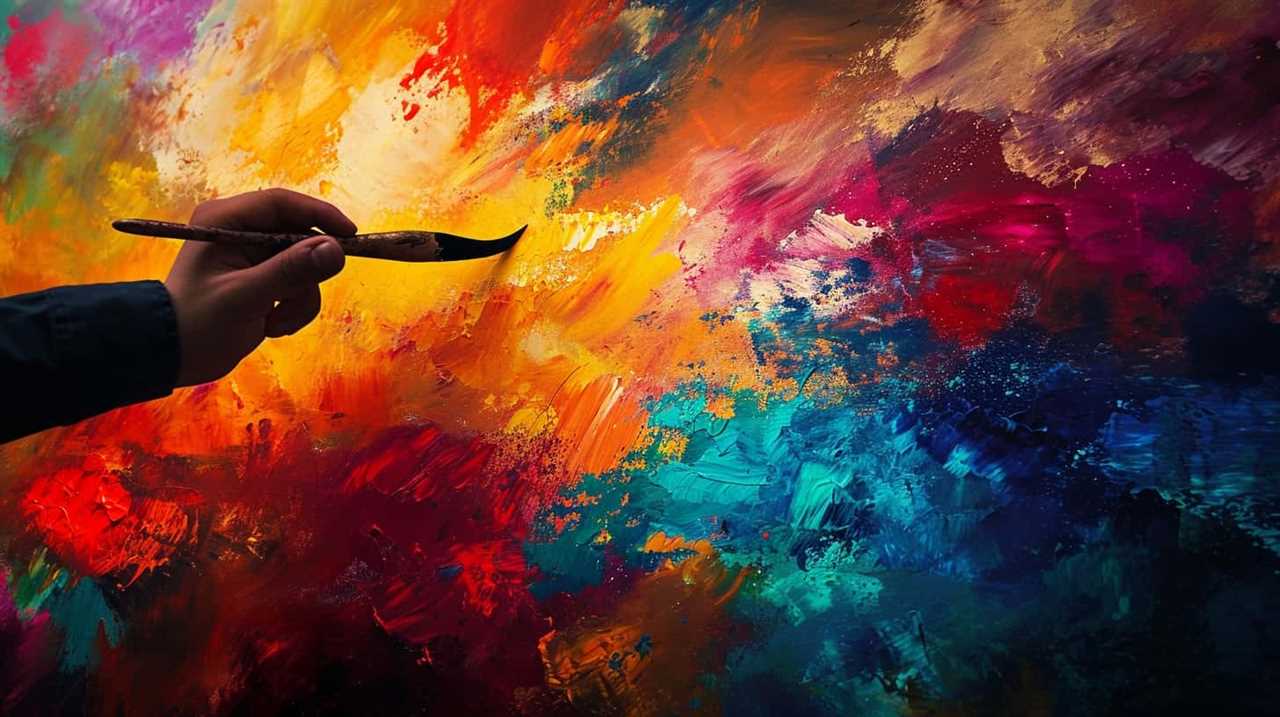
Finally, Frida Kahlo’s belief in art as a political statement and Claude Monet’s revolutionary approach to the perception of reality inspire us to push the boundaries of our own creativity.
Key Takeaways
- Art has the power to express emotions and serve as a form of healing.
- Art is interconnected with other disciplines such as science.
- Abstract art can be a means of spiritual expression.
- Art allows for freedom of expression and abstract expressionism.
Pablo Picasso on the Power of Art
In our exploration of creativity’s purpose, we frequently encounter the profound insights of Pablo Picasso on the transformative power of art. Picasso, a Spanish painter and sculptor, is widely regarded as one of the most influential artists of the 20th century. His artistic process and innovative techniques have left an indelible mark on the art world.
Picasso’s artistic process was marked by constant experimentation and a willingness to push the boundaries of traditional art. He believed in embracing change and letting go of preconceived notions, allowing him to create groundbreaking works that challenged the status quo. Picasso’s innovative techniques, such as Cubism and collage, revolutionized the way art was perceived and created.
One of Picasso’s most famous quotes perfectly encapsulates his approach to art: ‘Every act of creation is first an act of destruction.’ This profound statement emphasizes Picasso’s belief in breaking down existing structures in order to create something new and original. He saw art as a powerful tool for transformation, both on an individual and societal level.
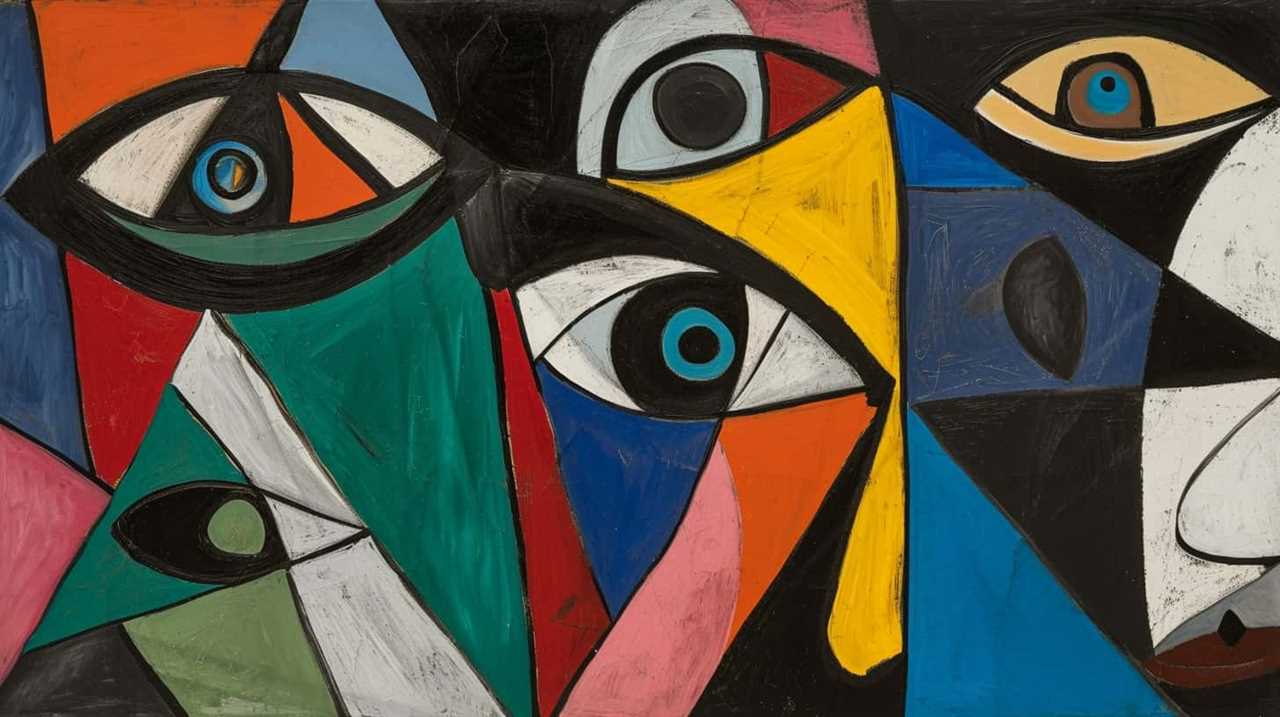
Picasso’s ability to seamlessly blend different styles and techniques is evident in his iconic painting, ‘Les Demoiselles d’Avignon.’ This masterpiece combines elements of African tribal art, Cubism, and traditional European painting, resulting in a visually striking and emotionally charged work of art.
Vincent Van Gogh on Expressing Emotions Through Art
When it comes to expressing emotions through art, Vincent Van Gogh’s work stands as a powerful testament to the human experience. His vibrant brushstrokes and bold colors convey a rawness and intensity that resonates deeply with viewers.
Van Gogh’s ability to translate his inner turmoil onto the canvas hasn’t only made him an iconic figure in the art world but has also inspired countless artists to explore the transformative power of expression.
Art as Emotional Outlet
As we delve into the topic of art as an emotional outlet, it’s important to consider Vincent Van Gogh’s perspective on how emotions can be effectively expressed through artistic creation.
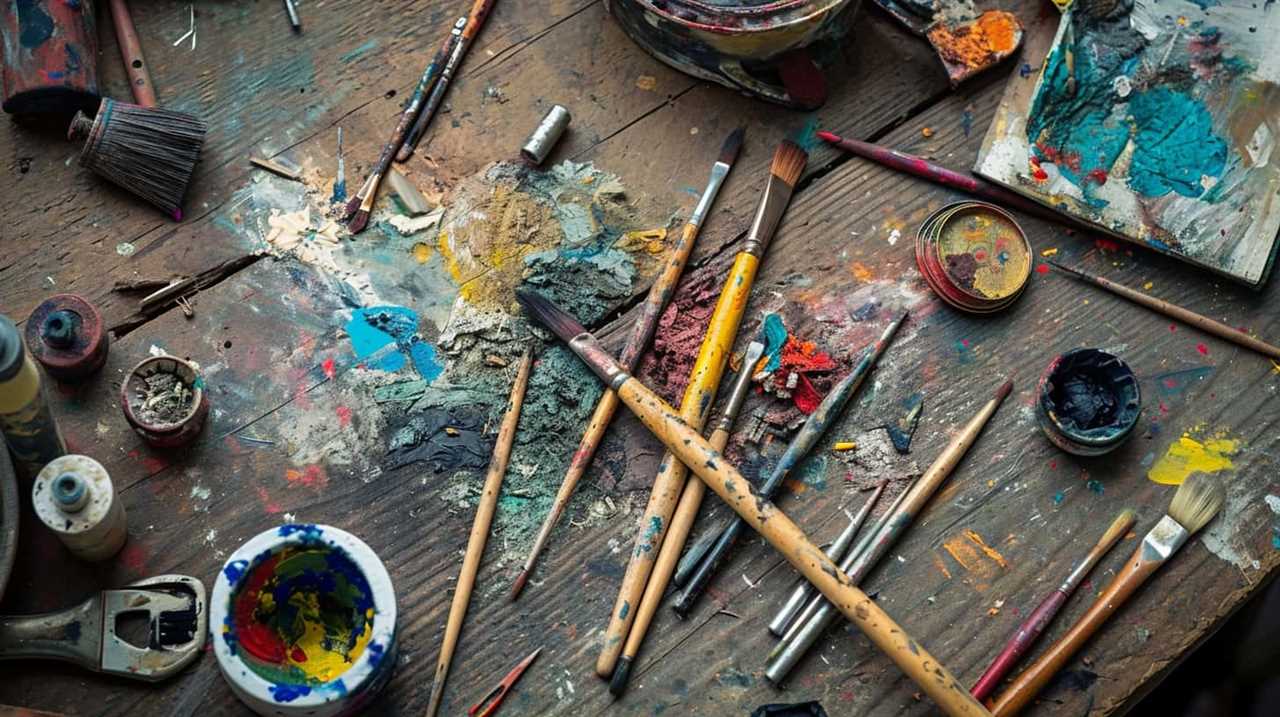
Van Gogh believed that art could serve as a form of therapy, allowing individuals to explore and process their emotions through creativity. He saw art as a means of externalizing internal feelings, allowing for a cathartic release and a deeper understanding of oneself.
Through his own works, Van Gogh conveyed his intense emotions, such as loneliness, despair, and passion. His use of bold brushstrokes and vibrant colors reflected the intensity of his inner turmoil.
Van Gogh’s ability to convey emotions through his art has had a profound influence on subsequent generations of artists, inspiring them to explore the depths of human emotion in their own creations.
Van Gogh’s Artistic Influence
Van Gogh’s artistic influence on expressing emotions through art is undeniable. His unique approach to painting, coupled with his struggles with mental health, allowed him to create artworks that resonate deeply with viewers.
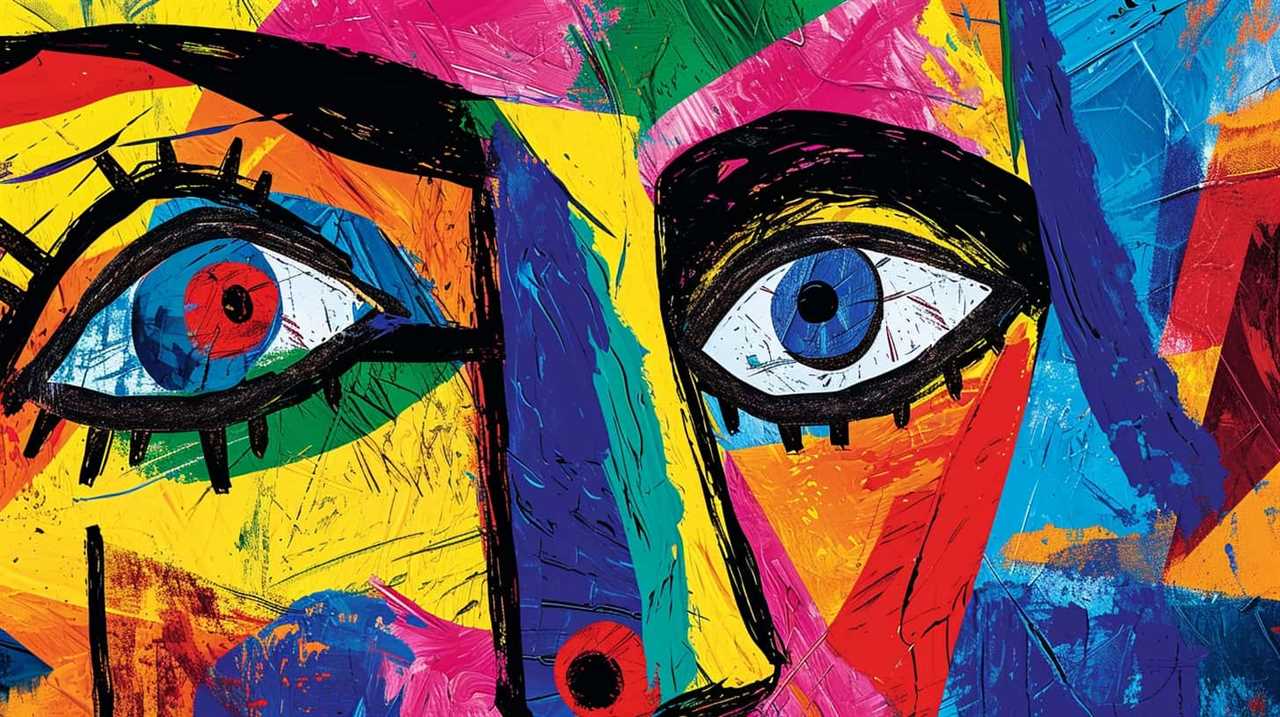
- Emotional intensity: Van Gogh’s paintings are known for their emotional intensity, capturing the rawness of human emotions in a way that’s both captivating and relatable.
- Bold use of color: Van Gogh’s use of vibrant and bold colors was revolutionary at the time. He used color to convey emotions and create a sense of movement and energy in his artworks.
- Expressive brushwork: Van Gogh’s expressive and energetic brushwork added an additional layer of emotion to his paintings. The visible brushstrokes heightened the intensity and conveyed the artist’s emotional state.
- Symbolism: Van Gogh often used symbolism in his artworks to express his inner emotions and thoughts. Objects and elements in his paintings held deeper meaning, allowing viewers to connect on a more profound level.
- Self-expression as therapy: Van Gogh saw art as a way to express and process his emotions, finding solace and healing through his creative process. His art became a reflection of his inner turmoil, providing him with a means to communicate and cope with his mental health challenges.
The Power of Expression
Continuing from the previous subtopic on Van Gogh’s artistic influence, we can delve into the power of expression and how Vincent Van Gogh utilized art to convey his emotions.
Van Gogh believed in the role of creativity in self-expression, recognizing that art could serve as a powerful medium to communicate his innermost thoughts and feelings. Through his vibrant and emotionally charged paintings, he was able to capture the intensity of his own experiences and share them with the world.
Van Gogh’s art was a form of therapy for him, allowing him to process his emotions and find solace in the act of creation. The therapeutic benefits of artistic expression are well-documented, as it provides an outlet for individuals to explore and express their emotions in a safe and constructive manner.
Van Gogh’s work serves as a testament to the transformative power of art and its ability to heal and inspire.
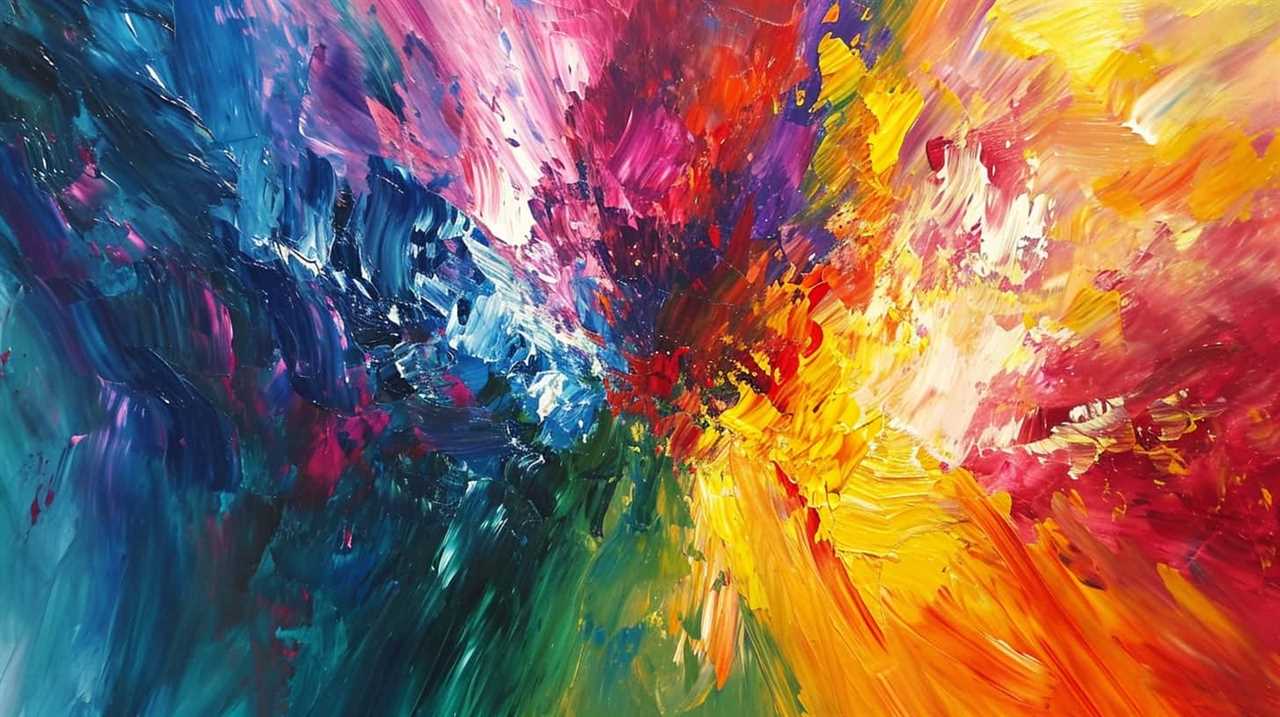
Frida Kahlo on Art as a Form of Healing
We believe that Frida Kahlo’s perspective on art as a form of healing is both profound and inspiring. Kahlo, a renowned Mexican artist, used her artwork as a means of self-expression and catharsis. Through her paintings, she was able to channel her physical and emotional pain, finding solace and release in the act of creation.
Here are five key insights into Frida Kahlo’s belief in art as a form of healing:
- Art as therapy: Kahlo saw art as a therapeutic tool, allowing her to explore and confront her innermost thoughts and emotions.
- Coping with pain: She used her artwork to cope with the physical pain she experienced due to a debilitating accident and ongoing health issues.
- Embracing vulnerability: Kahlo’s art embraced vulnerability, providing her with a platform to express her most intimate struggles and fears.
- Finding identity: Through her art, Kahlo sought to communicate her unique identity as a Mexican woman, challenging societal norms and conventions.
- Connecting with others: Kahlo’s art resonated with others who were also experiencing pain and suffering, creating a sense of empathy and understanding.
Kahlo’s belief in the healing power of art continues to inspire artists and individuals alike. Her ability to transform pain into beauty is a testament to the transformative nature of creativity.
Transitioning into the subsequent section about Leonardo da Vinci’s perspective on the connection between art and science, it’s interesting to explore how these two seemingly distinct disciplines intersect and complement each other.

Leonardo Da Vinci on the Connection Between Art and Science
As we delve into Leonardo Da Vinci’s perspective on the connection between art and science, it is fascinating to explore how these two disciplines intersect and complement each other. Leonardo’s scientific influence greatly impacted his artistic connection, as he believed that art and science were interconnected and essential for true understanding of the natural world. In fact, Leonardo saw no distinction between the two, viewing art as a means of observing and depicting the scientific principles that governed the universe.
| Artistic Connection | Leonardo’s Scientific Influence |
|---|---|
| Observation | Leonardo’s keen eye for detail and his scientific studies of anatomy greatly influenced his ability to accurately depict the human form in his artwork. He believed that observing the natural world was crucial for creating realistic and lifelike representations. |
| Experimentation | Leonardo’s scientific experiments and investigations into various phenomena, such as the movement of water and the flight of birds, informed his artistic techniques. He utilized his scientific knowledge to create paintings that were not only visually stunning but also scientifically accurate. |
| Innovation | Leonardo’s curiosity and thirst for knowledge drove him to explore new ideas and push the boundaries of both art and science. His innovative approach to both disciplines allowed him to create groundbreaking artworks that still captivate and inspire us today. |
Leonardo Da Vinci’s belief in the connection between art and science continues to influence artists and scientists alike. His ability to merge these disciplines has left a lasting legacy, reminding us of the power and potential that lies in embracing the intersection of art and science.
Georgia O’Keeffe on Finding Beauty in the Ordinary
Georgia O’Keeffe’s perspective on Finding Beauty in the Ordinary illuminates the profound impact that everyday objects can have on our artistic expression. O’Keeffe, renowned for her vibrant paintings of flowers, landscapes, and skulls, believed that there was inherent beauty in the simplest of things. She found inspiration in the ordinary, transforming it into extraordinary works of art that captivated viewers.
- Seeing the Unseen: O’Keeffe had a unique ability to see the beauty in objects that others often overlooked. She encouraged us to look closer at the world around us and discover the hidden wonders that lie within.
- Finding Essence and Form: O’Keeffe believed that by focusing on the essence and form of an object, we can capture its true beauty. She emphasized the importance of stripping away unnecessary details to reveal the underlying essence.
- Celebrating Simplicity: O’Keeffe’s work celebrated the simplicity of everyday objects, elevating them to a level of artistic significance. Through her paintings, she reminded us that beauty can be found in the most ordinary things.
- Transforming the Mundane: O’Keeffe’s ability to transform mundane objects into extraordinary works of art was a testament to her artistic vision. She showed us that with the right perspective, anything can become a source of inspiration.
- Inviting Contemplation: O’Keeffe’s paintings invited viewers to contemplate the beauty of the ordinary. She encouraged us to pause, reflect, and appreciate the world around us in a new and profound way.
Through her unique perspective, Georgia O’Keeffe reminds us that the ordinary can be a powerful source of inspiration. By finding beauty in everyday objects, we open ourselves up to a world of creativity and artistic expression.
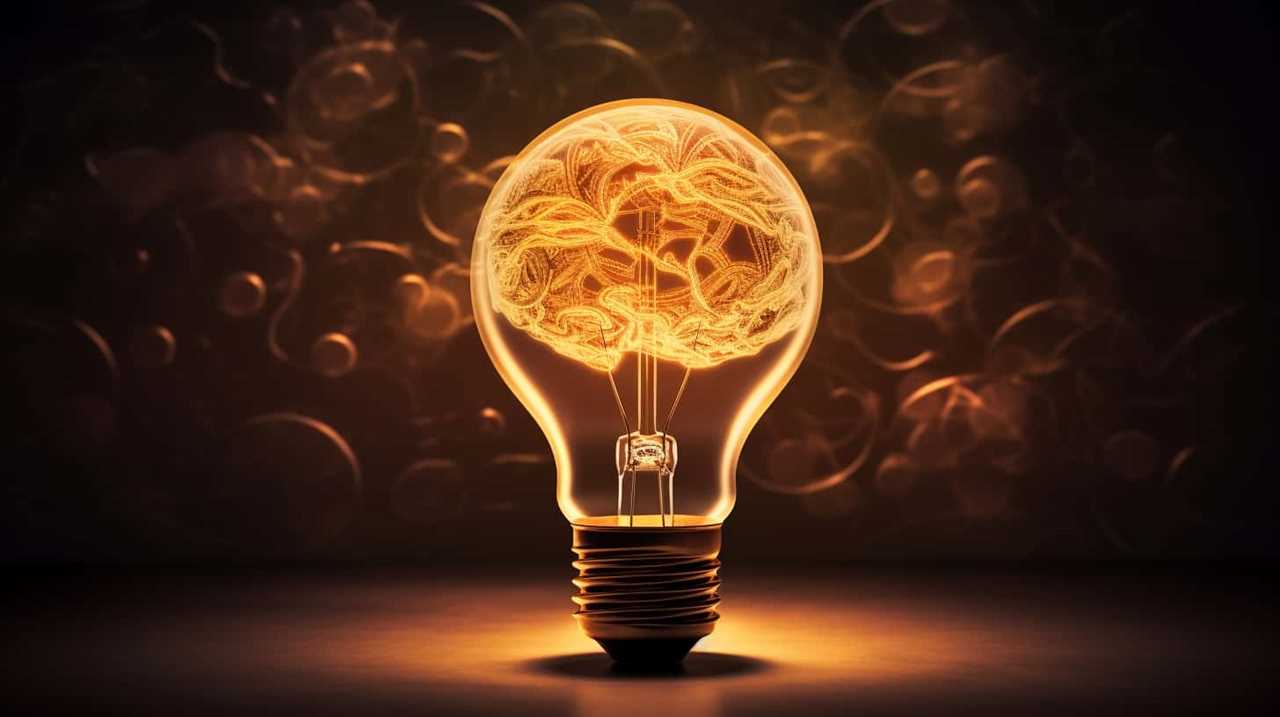
Claude Monet on Capturing the Essence of Nature
Continuing the exploration of artistic perspectives, Claude Monet’s insight on capturing the essence of nature expands upon the theme of finding beauty in the ordinary. Monet’s artistic techniques were centered around his desire to capture the natural beauty that surrounded him. Through his innovative approach, he sought to convey the fleeting moments of nature’s splendor, allowing viewers to experience the sensory richness of the world.
One of Monet’s most famous artistic techniques was his use of light and color. He believed that by capturing the changing qualities of light and its impact on the colors of nature, he could authentically represent the essence of the natural world. This can be seen in his series of paintings of water lilies, where he skillfully depicted the reflection of light on the water’s surface, creating a sense of tranquility and harmony.
In addition, Monet’s brushwork was also instrumental in capturing natural beauty. He used loose, short brushstrokes to create a sense of movement and spontaneity in his paintings. This technique allowed him to convey the ever-changing nature of the environment, as well as the emotions it evoked.
By capturing the essence of nature through his artistic techniques, Monet invites us to appreciate the beauty that surrounds us every day. His ability to depict the ordinary in an extraordinary way reminds us to take a moment to truly see and experience the world around us.

Transitioning into the subsequent section about Salvador Dali’s perspective on surrealism and the subconscious mind, we delve into the realm of the unconventional and the subconscious.
Salvador Dali on Surrealism and the Subconscious Mind
Salvador Dali’s profound influence on Surrealism and his exploration of the subconscious mind through his art make him a fascinating subject to discuss.
Dali’s unique approach to painting and his ability to depict dreamlike imagery challenged traditional artistic norms and pushed the boundaries of creativity.
Dali’s Influence on Surrealism
Dali’s impact on surrealism and our understanding of the subconscious mind is profound. His artistic techniques and exploration of the subconscious have influenced not only the surrealist movement but also contemporary art as a whole. Here are five key aspects of Dali’s influence on surrealism:
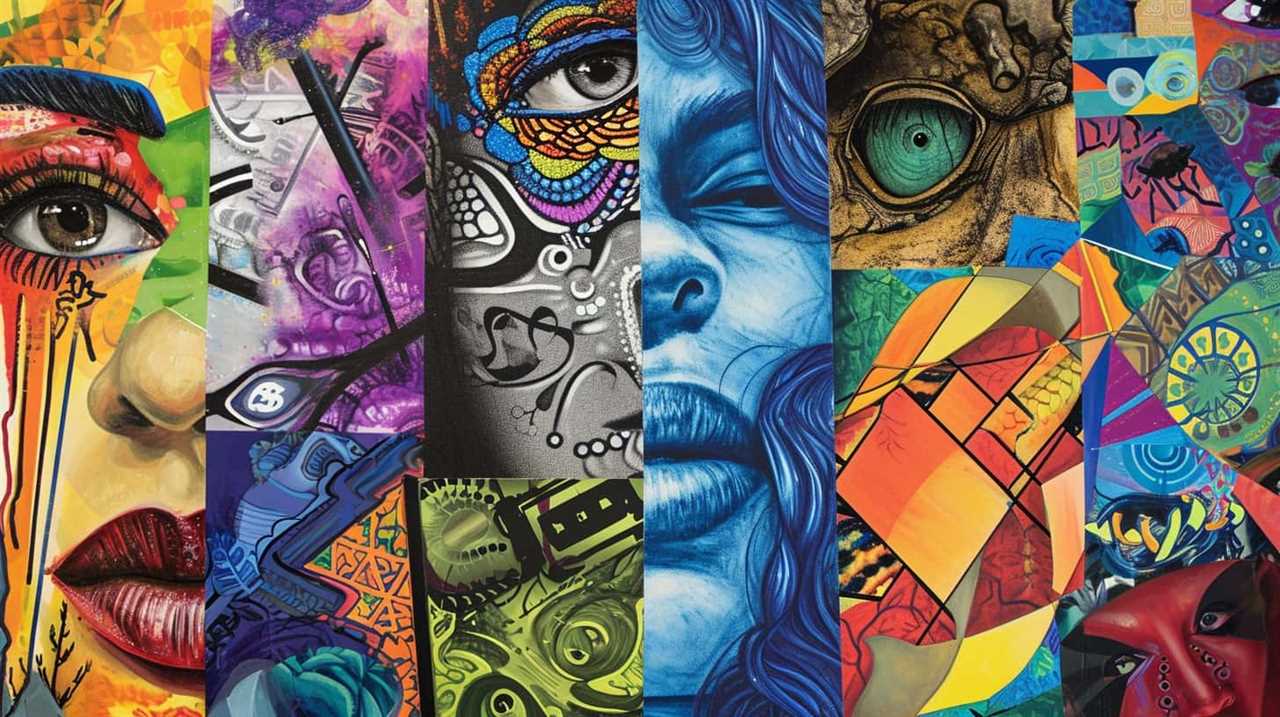
- Dreamlike Imagery: Dali’s use of vivid, bizarre, and often unsettling imagery created a dreamlike atmosphere in his paintings, inviting viewers to delve into their own subconscious.
- Symbolic Associations: Dali’s works are filled with symbolic associations, allowing viewers to interpret and decode hidden meanings, thus engaging with the subconscious on a deeper level.
- Distorted Reality: Dali’s manipulation of perspective, scale, and proportion created a sense of disorientation and challenged traditional notions of reality, encouraging viewers to question their own perceptions.
- Automatism: Dali incorporated elements of automatism, a technique where the artist allows their subconscious mind to guide their creative process, resulting in spontaneous and unexpected imagery.
- Legacy in Contemporary Art: Dali’s influence on surrealism can be seen in the works of many contemporary artists who continue to explore the subconscious, incorporating dreamlike elements and symbolic associations in their art.
Dali’s contributions to surrealism and his exploration of the subconscious mind continue to inspire and captivate artists and art enthusiasts alike, leaving a lasting impact on the art world.
Subconscious Exploration Through Art
As artists, we explore the depths of the subconscious mind through our art, delving into the realm of surrealism to unlock hidden truths and provoke thought.
Salvador Dali, a prominent surrealist painter, believed that the subconscious mind held immense power and artistic inspiration. He saw art as a means to tap into this vast reservoir of creativity. Dali’s work often featured bizarre and dreamlike imagery, showcasing the mysteries of the subconscious. Through his paintings, he aimed to challenge conventional thinking and reveal the hidden desires and fears that reside within us all. By embracing the irrational and fantastical, Dali encouraged viewers to question their own perceptions and explore the depths of their own subconscious minds.
Transitioning to the next section, another artist who delved into the spiritual realm through art is Wassily Kandinsky.
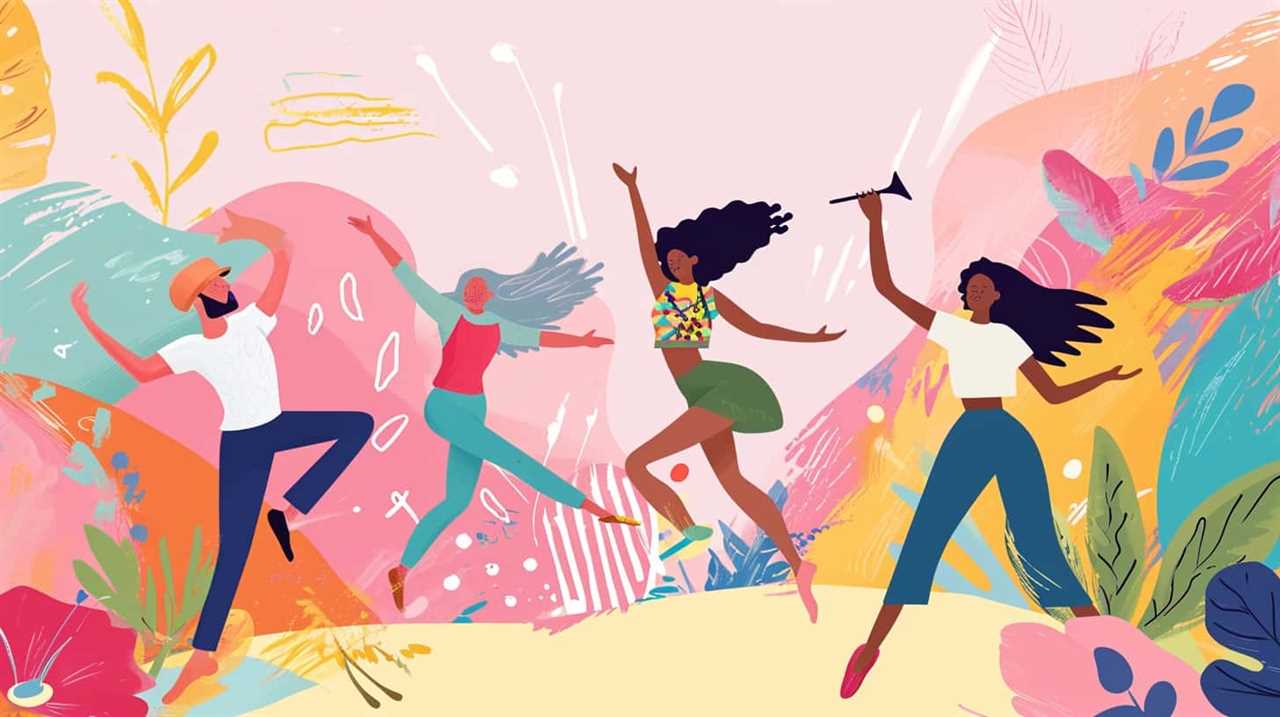
Wassily Kandinsky on Abstract Art and Spiritual Expression
Abstract art and its connection to spiritual expression have always fascinated us. Wassily Kandinsky, a pioneer of abstract art, believed that art had the power to transcend the physical and evoke spiritual experiences. His artwork not only explored the depths of the human psyche but also tapped into the spiritual realm.
Here are five key insights into Kandinsky’s views on abstract art and its spiritual significance:
- Abstract art as a gateway to the spiritual: Kandinsky believed that abstract art had the ability to communicate directly with the viewer’s soul, bypassing the need for representation and engaging with universal emotions and experiences.
- The spiritual in art: Kandinsky saw art as a spiritual language, capable of conveying profound emotions and ideas that were beyond the limitations of words.
- The power of color and form: Kandinsky believed that color and form had inherent spiritual qualities that could evoke specific spiritual experiences in the viewer.
- Liberation from materialism: Kandinsky saw abstract art as a means of liberating oneself from the constraints of materialism and connecting with higher spiritual truths.
- Inspiring contemporary artists: Kandinsky’s exploration of the spiritual in art continues to inspire contemporary artists who seek to go beyond the physical and delve into the depths of the spiritual realm in their work.
Jackson Pollock on the Freedom of Abstract Expressionism
One artist who embraced the freedom of abstract expressionism was Jackson Pollock, unleashing his creativity through dynamic and spontaneous brushstrokes. Pollock believed in the power of freedom in artistic expression, valuing the ability to break away from traditional forms and conventions. Abstract art provided him with the perfect platform to explore this freedom, allowing for individual interpretation and personal expression.
Pollock’s iconic drip paintings exemplify his belief in the liberation of artistic expression. Through his unique technique of pouring, splattering, and dripping paint onto the canvas, he created intricate and layered compositions that were devoid of recognizable subjects. This abstract approach allowed viewers to engage with the artwork on a deeply personal level, as they were encouraged to interpret the paintings based on their own experiences, emotions, and perceptions.
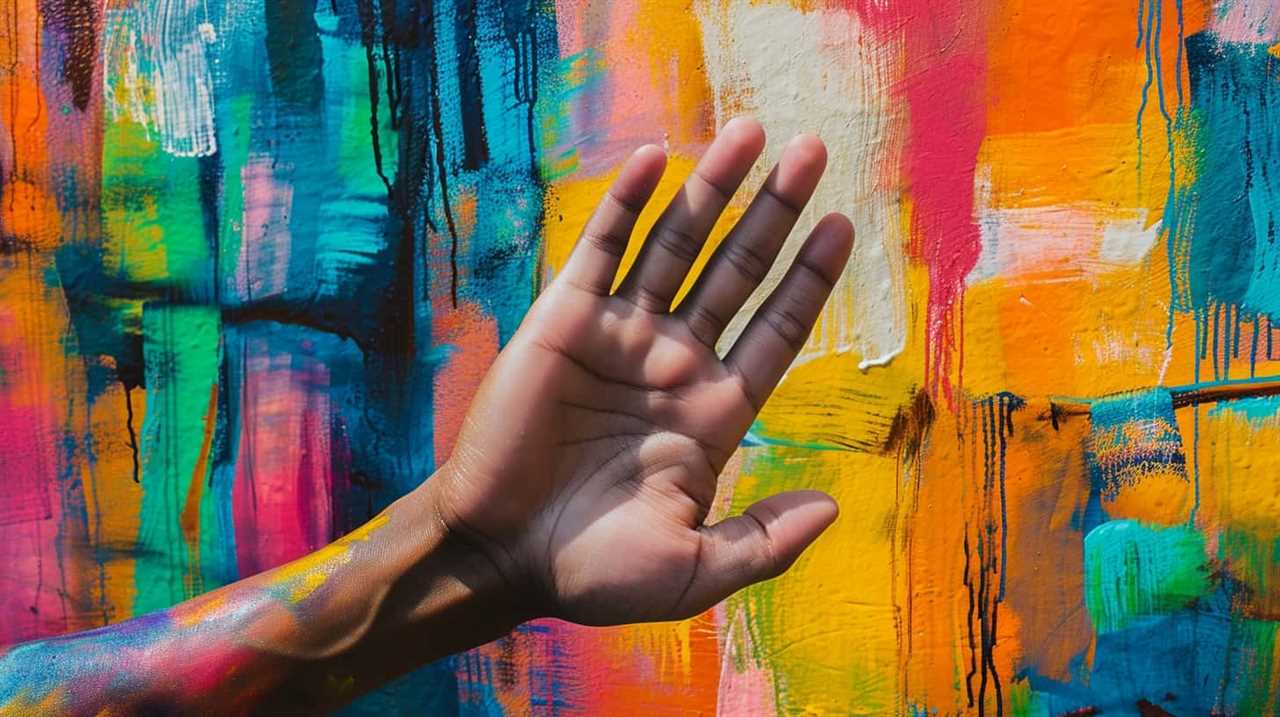
The freedom of abstract expressionism not only offered Pollock the opportunity to experiment with new techniques and materials but also allowed him to tap into his subconscious mind. By relinquishing control and surrendering to the creative process, Pollock was able to channel his emotions and thoughts directly onto the canvas, resulting in powerful and evocative artworks.
Henri Matisse on Art as a Source of Joy
When it comes to art, one can’t overlook the profound connection between creativity and joy.
Henri Matisse, a renowned artist known for his vibrant and expressive works, believed that art should bring happiness to both the artist and the viewer.
His creative philosophy revolved around the idea of finding joy in artistic expression, and he often sought to capture the essence of beauty and pleasure in his artwork.

Art and Happiness
Artists like Henri Matisse believe that art brings us joy and fulfillment. Art has the power to uplift our spirits and evoke positive emotions. It allows us to express our innermost thoughts and feelings, providing a sense of release and catharsis.
Through creative expression, we can explore our true selves and connect with our deepest desires and passions. Art therapy, a form of treatment that utilizes artistic activities, has shown to improve mental well-being and promote happiness. Engaging in artistic endeavors allows us to tap into our imagination and create something meaningful and beautiful.
It encourages us to embrace our unique perspectives and find joy in the process of creation. Art has the ability to transport us to a state of bliss and contentment, offering us a glimpse of the beauty and wonder that exists in the world.
Matisse’s Creative Philosophy
As we delve into Matisse’s creative philosophy, we discover his belief that art serves as a source of joy for both the artist and the viewer. Matisse’s artistic techniques, particularly his use of color and form, are key elements in his pursuit of creating joy through his artwork.
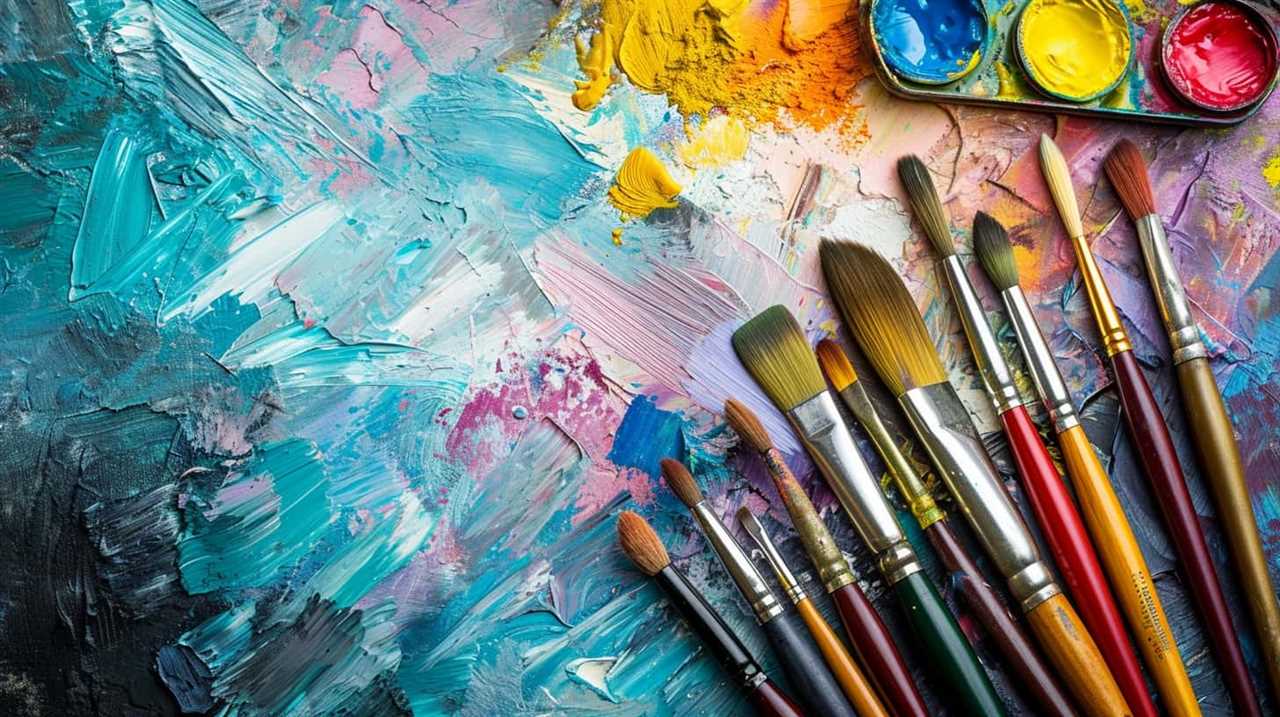
Matisse was known for his bold and vibrant use of color, which he believed could evoke emotions and create a sense of pleasure in the viewer. He used colors that were not necessarily true to life, but rather ones that conveyed the essence and mood of the subject. His use of form was also instrumental in creating a sense of joy in his artwork. Matisse simplified and abstracted shapes, allowing the viewer to focus on the overall harmony and balance of the composition.
Incorporating a 2 column and 4 row table in markdown format adds a level of sophistication to the discussion of Matisse’s artistic techniques:
| Artistic Technique | Description |
|---|---|
| Use of Color | Matisse’s bold and vibrant use of color evokes emotions and creates pleasure in the viewer. |
| Use of Form | Matisse simplifies and abstracts shapes to create harmony and balance in his compositions. |
Joy in Artistic Expression?
Our exploration of joy in artistic expression is enhanced by Henri Matisse’s profound belief that art brings immeasurable joy to both the artist and the viewer.
Matisse, a renowned painter, saw art as a means of finding inspiration and exploring creativity. He believed that the act of creating art filled the artist with a sense of joy and fulfillment.

Moreover, Matisse believed that this joy was contagious and could be transmitted to the viewer through the artwork itself. The vibrant colors and bold brushstrokes in his paintings were intended to evoke a sense of joy and vitality in those who experienced them.
Matisse’s philosophy reminds us of the transformative power of art, how it can uplift our spirits and bring us joy in our own creative endeavors.
Edvard Munch on Art as a Reflection of the Soul
Exploring the depths of human emotions, creating art becomes a powerful tool for reflecting the soul, as Edvard Munch believed. Munch, the renowned Norwegian painter and printmaker, was deeply fascinated by the inner workings of the human psyche. He saw art as a means to delve into the complexities of the human experience, to capture the rawness and intensity of our emotions. For Munch, artistic inspiration stemmed from a deep connection to one’s inner self, allowing the soul’s expression to manifest on canvas.
Munch’s iconic painting, ‘The Scream,’ is a prime example of his exploration of the soul’s reflection in art. The distorted figure, the vibrant colors, and the swirling background all come together to portray a profound sense of anguish and despair. Through this work, Munch invites us to confront our own fears and anxieties, to confront the darker aspects of our own souls.
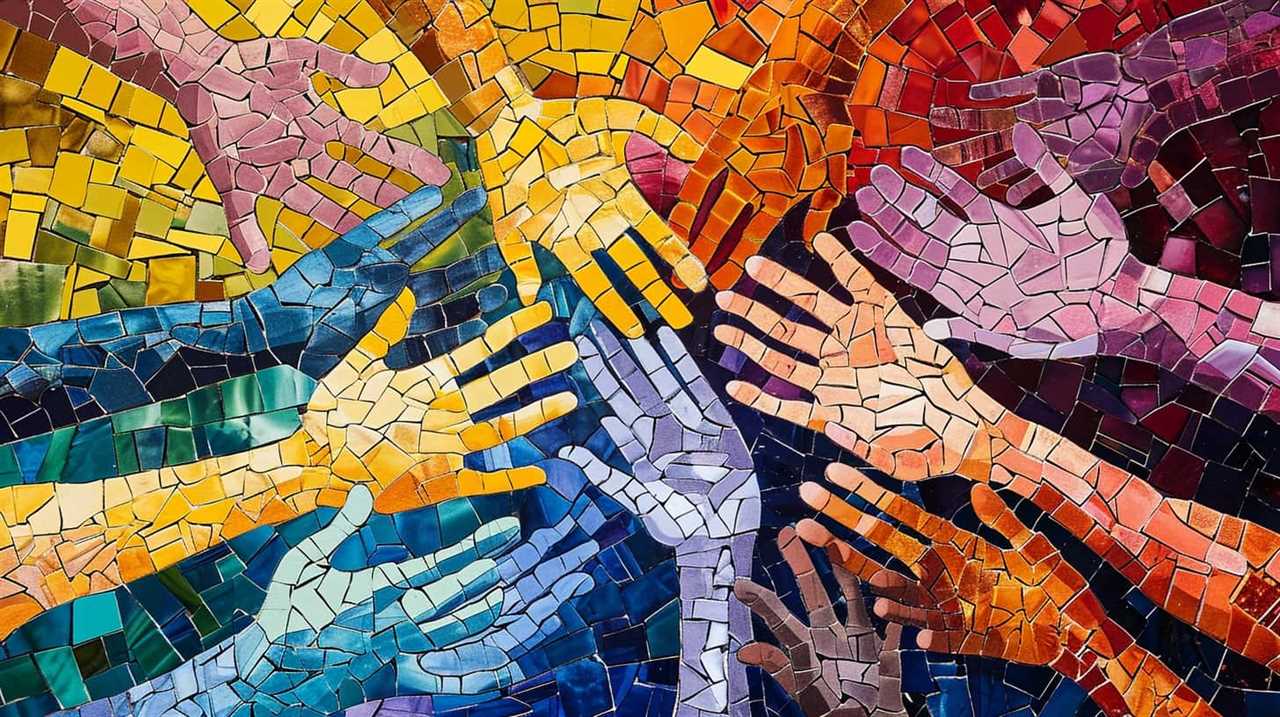
By delving into the depths of human emotions, Munch’s art becomes a mirror that reflects the inner workings of the soul. His paintings serve as a testament to the power of art to communicate the unspoken, to give voice to the intangible. In this way, Munch’s work resonates with audiences who seek to understand and connect with their own inner selves.
Transitioning now to the subsequent section about Andy Warhol on pop art and mass culture…
Andy Warhol on Pop Art and Mass Culture
In discussing Andy Warhol’s perspective on pop art and mass culture, we delve into the influence of these societal phenomena on artistic expression. Warhol was a leading figure in the pop art movement, which emerged in the 1950s and 1960s as a reaction to the rise of consumer culture and the proliferation of mass-produced goods. His work often depicted images from popular culture, such as Campbell’s soup cans, Marilyn Monroe, and Coca-Cola bottles. Warhol’s influence on contemporary art can’t be overstated, as his bold and iconic style continues to resonate with artists today.
- Pop art as a critique of consumerism: Warhol’s work challenged the notion of art as something exclusive and highbrow. By using everyday objects and images, he questioned the value placed on art and exposed the influence of consumer culture on society.
- The democratization of art: Warhol believed that art should be accessible to everyone. Through his use of mass production techniques, such as screen printing, he made his work more affordable and reproducible, thus breaking down barriers to art consumption.
- The blurring of art and advertising: Warhol’s embrace of popular imagery blurred the lines between art and advertising. He saw commercialism as an inherent part of modern life and embraced it in his work, further highlighting the influence of consumer culture on society.
- The power of repetition: Warhol often used repetition in his art, such as multiple images of the same celebrity or product. This repetition emphasized the ubiquity of mass culture and the way it infiltrates our daily lives.
- Warhol’s role as a cultural commentator: Through his art, Warhol commented on the superficiality and obsession with fame in contemporary society. He captured the essence of celebrity culture and consumerism, revealing the shallowness and emptiness that often lie beneath the surface.
Warhol’s exploration of the relationship between pop art and consumerism continues to inspire contemporary artists, who grapple with similar themes in their work. His influence can be seen in the use of popular imagery, the incorporation of mass production techniques, and the ongoing critique of consumer culture in art today.

Gustav Klimt on the Symbolism of Art
Delving into Gustav Klimt’s perspective on the symbolism of art, we find a profound exploration of the human experience and the power of visual representation. Klimt, an Austrian symbolist painter, was renowned for his decorative and intricate artworks that often incorporated symbolism in profound ways. His artistic techniques, such as his use of gold leaf and intricate patterns, added depth and richness to his paintings, allowing for a deeper exploration of his subjects.
Symbolism played a crucial role in Klimt’s art, as he sought to convey deeper meanings and emotions through his visual language. His paintings weren’t merely representations of the physical world, but rather a reflection of the inner thoughts, desires, and struggles of humanity. By incorporating symbolic elements, Klimt was able to tap into the universal human experience, evoking emotions and sparking contemplation in his viewers.
Klimt’s use of symbolism went beyond mere aesthetics; it served as a vehicle for expressing profound ideas and concepts. His art became a conduit for exploring themes of love, desire, death, and the human psyche. Through his artistic techniques, Klimt was able to create a visual language that transcended the limitations of words, allowing for a more profound and visceral connection with his audience.
As we delve into the symbolism in Klimt’s art, we begin to see the power and impact that visual representation can have on our understanding of the human experience. Through his artistic techniques and symbolic imagery, Klimt invites us to question, reflect, and explore the deeper layers of our existence.

Transitioning into the subsequent section about Frida Kahlo, we see how art can also be a powerful tool for making political statements and challenging societal norms.
Frida Kahlo on Art as a Political Statement
Continuing our exploration of the profound impact of symbolism in art, we now turn to Frida Kahlo’s perspective on the power of art as a political statement.
Kahlo, a renowned Mexican artist, used her artwork not only as a means of self-expression but also as a tool for social change. Her influence on feminist art can’t be overstated, as she fearlessly tackled themes of gender inequality, sexuality, and identity in her paintings.
- Art as a vehicle for activism: Kahlo believed that art had the ability to challenge the status quo and bring attention to social injustices. Through her powerful imagery and symbolism, she sought to provoke conversations and inspire action.
- The personal as political: Kahlo’s art often drew from her own personal experiences, presenting them in a way that resonated with a wider audience. By sharing her pain, struggles, and triumphs, she connected with others and shed light on universal issues.
- Breaking gender norms: Kahlo’s art challenged traditional gender roles and stereotypes, presenting a more complex and nuanced view of femininity. She celebrated the strength and resilience of women, and her work continues to inspire feminist artists today.
- Embracing cultural heritage: Kahlo’s art was deeply rooted in Mexican culture, incorporating elements of folklore, mythology, and indigenous symbolism. Through her work, she celebrated her heritage and fought against cultural appropriation.
- Amplifying marginalized voices: Kahlo used her platform to give voice to those who were often silenced or overlooked. She used her art to highlight the experiences of indigenous people, the working class, and the LGBTQ+ community, bringing attention to their struggles and advocating for their rights.
Frida Kahlo’s art serves as a reminder of the transformative power of creativity and its potential to incite social change. Her bold and unapologetic approach continues to inspire artists and activists around the world, making her a true icon of feminist art.

Claude Monet on the Impressionist Movement and Perception of Reality
When it comes to the Impressionist movement and the perception of reality, Claude Monet’s impact on art can’t be overstated. Through his use of loose brushstrokes and vibrant colors, Monet challenged the traditional notions of representation and brought a new level of dynamism to his paintings.
Monet’s Impact on Art
Monet’s art revolutionized the perception of reality in the Impressionist movement. His unique artistic style and influence on the Impressionist movement had a profound impact on the art world.
Here are five key aspects of Monet’s impact on art:
- Break from tradition: Monet challenged the established norms of traditional art by focusing on capturing fleeting moments and the effects of light on objects.
- Emphasis on perception: Monet’s art aimed to depict the artist’s personal perception of reality, rather than portraying an objective representation.
- Exploration of color and light: Monet’s use of vibrant colors and his ability to capture the changing qualities of light brought a new level of depth and vibrancy to his paintings.
- Influence on future generations: Monet’s innovative approach to art paved the way for future movements such as Post-Impressionism and Abstract Expressionism.
- Legacy of inspiration: Monet’s art continues to inspire artists today, encouraging them to experiment with their own perceptions of reality and push the boundaries of traditional art.
Perception and Reality
Building upon Monet’s groundbreaking contributions to the art world, we delve into the profound connection between perception and reality within the Impressionist movement.

The Impressionists challenged traditional notions of representation and sought to capture the fleeting nature of reality. They emphasized the subjective experience of the artist and the viewer, highlighting the difference between perception and interpretation.
Through their use of loose brushstrokes and vibrant colors, the Impressionists aimed to evoke the sensation of a moment rather than depict a precise representation of reality. They recognized that perception is influenced by individual experiences, emotions, and biases.
The Impressionists also understood the role of imagination in shaping reality, as they believed that art should reflect the artist’s unique vision and inner world. By embracing the transformative power of perception, the Impressionists revolutionized the art world and continue to inspire artists today.
Frequently Asked Questions
How Did Pablo Picasso Believe That Art Could Empower Individuals?
Picasso believed that art could empower individuals by challenging societal norms, allowing for self-expression, and fostering a sense of creativity and imagination. His influence on the art world continues to inspire and encourage artistic empowerment.

What Did Vincent Van Gogh Think About the Role of Emotions in Artistic Expression?
Vincent van Gogh believed that emotions played a pivotal role in artistic expression. His artistic philosophy emphasized the power of emotions to convey deeper meaning and connect with viewers on a profound level.
How Did Frida Kahlo Use Art as a Means of Healing?
Frida Kahlo used art as a means of healing through her art therapy. Her self expression through art allowed her to explore her emotions and experiences, ultimately helping her to find solace and understanding in her own pain.
What Was Leonardo Da Vinci’s Perspective on the Relationship Between Art and Science?
Leonardo da Vinci’s perspective on the relationship between art and science can be summarized as a harmonious union of the two disciplines, with art serving as a means to better understand and express scientific concepts.
How Did Georgia O’keeffe Find Beauty in Ordinary Subjects?
Georgia O’Keeffe’s unique perspective allowed her to find beauty in ordinary subjects. Through her influential artistic style, she transformed everyday objects into captivating works of art, revealing the hidden beauty in the mundane.
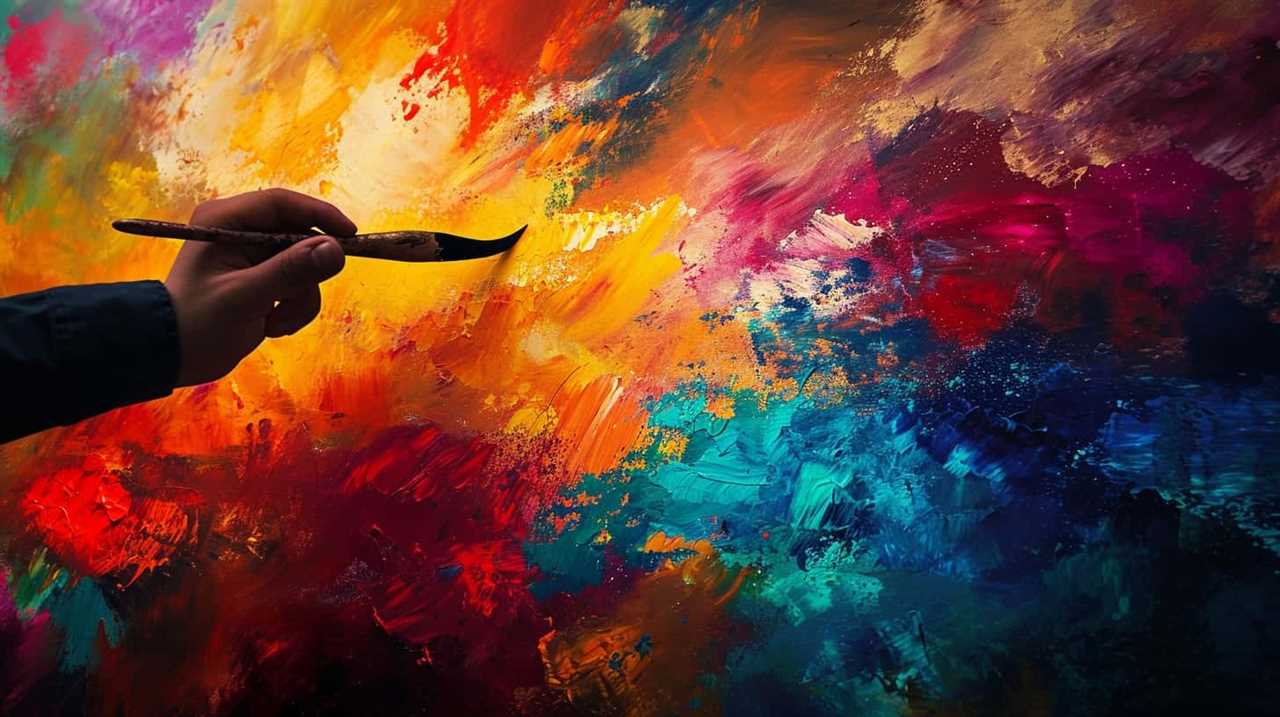
How Do Artists’ Impact and Creativity’s Purpose Intersect in Inspiring Quotes?
The intersection of artists’ impact and creativity’s purpose is beautifully captured in inspiring artists’ passion quotations. These quotes reflect the profound influence artists have on society and the world, showcasing the power of creativity to spark inspiration and change. Their words ignite a fire within others to pursue their own creative passions.
Conclusion
In conclusion, these inspiring artistic quotes on the purpose of creativity demonstrate the power of art to:
- Express emotions
- Heal
- Connect art and science
- Find beauty in the ordinary
- Challenge societal norms
- Symbolize deeper meanings
Through the Impressionist movement, artists like Claude Monet reshaped our perception of reality. The alliteration employed in this article adds a touch of sophistication to the writing, while the analytical and descriptive style provides insightful analysis of these artists’ perspectives on art.
Lauren’s talent in writing is matched by her passion for storytelling. Her love for books and deep understanding of culture and entertainment add a distinct flavor to her work. As our media and press contact, Lauren skillfully bridges the gap between afterQuotes and the broader media landscape, bringing our message to a wider audience.
